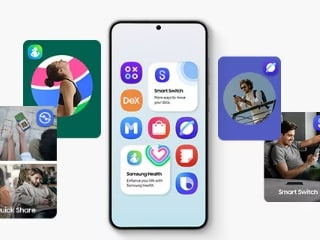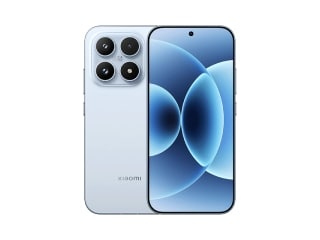- Home
- Mobiles
- Mobiles News
- iPhone 16 Outperforms iPhone 16e With Apple’s C1 Modem in Median Download Speeds: Report
iPhone 16 Outperforms iPhone 16e With Apple’s C1 Modem in Median Download Speeds: Report
The iPhone 16e reportedly outperformed Apple's more expensive model in certain markets.

The iPhone 16e (pictured) is the most affordable non-flagship iPhone in Apple's lineup
Apple's iPhone 16e, introduced in February, marked a significant shift in the company's hardware strategy. It is the first iPhone that uses a proprietary cellular modem, instead of relying on Qualcomm's chip. Much has been said about the C1 modem on the iPhone 16e since its introduction, with reports and surveys claiming it to be slower than its Qualcomm counterpart. A recent report compared the performance of the C1 modem on the iPhone 16e against the Qualcomm one on the iPhone 16, and both handsets outperformed each other on different metrics.
iPhone 16e vs iPhone 16: Modems Compared
A report analysed the performance of the iPhone 16e against the iPhone 16 on 5G across a range of markets, based on Ookla's Speedtest Intelligence data from Q2–Q3 2025. The iPhone 16 outperformed the iPhone 16e in 12 out of 21 advanced 5G markets when it comes to median download speeds. These included China, India, Saudi Arabia, and the US.
![]()
iPhone 16 (green) vs iPhone 16e (orange): Median download speeds compared
Photo Credit: Ookla
The largest difference between the median download speeds of both handsets was observed in Saudi Arabia, with the iPhone 16 delivering 353.49Mbps vs 295.01Mbps on the iPhone 16e. Meanwhile, the
Canada was one example where the iPhone 16e outshone its flagship counterpart, with a reported median download speed of 23.91Mbps, compared to 11.57Mbps on the iPhone 16.
The report stated that the iPhone 16 performs better on more capable networks that are based on 5G standalone (SA) technology, having support for uplink MIMO technology and higher carrier aggregation combinations. Due to technical limitations of the iPhone 16e, the handset is not able to match the performance of its flagship counterpart.
In the US, T-Mobile users reportedly experienced better network performance on the iPhone 16 compared to the iPhone 16e. This is said to be due to the flagship iPhone supporting four-carrier aggregation, as opposed to the three-carrier aggregation on the iPhone 16e. On T-Mobile's network, the median download speeds were reported to be 317.64Mbps and 252.80Mbps for the iPhone 16 and iPhone 16e, respectively.
However, there are some metrics on which the iPhone 16e delivered a strong performance. It recorded better 10th percentile download speeds; however, it is said to be due to users being connected solely to the low-band spectrum (sub-GHz). The report indicates that the iPhone 16e's C1 modem may be better optimised for continuity and reliability, being able to achieve a higher throughput in a case where there is marginal coverage.
The report further added that the iPhone 16e outperformed the iPhone 16 in certain markets was not due to its own accord, but because of the network bottlenecks faced by Qualcomm's chip. The analysts expect the performance to improve over time, as the carrier aggregation on 5G SA networks reaches higher levels.
Meanwhile, Gadgets 360 staff did not notice any real-world differences when using the iPhone 16e on Jio's 5G network in Mumbai. We did not face any connectivity issues, and it performed as expected, at par with the other iPhone models.
Get your daily dose of tech news, reviews, and insights, in under 80 characters on Gadgets 360 Turbo. Connect with fellow tech lovers on our Forum. Follow us on X, Facebook, WhatsApp, Threads and Google News for instant updates. Catch all the action on our YouTube channel.
Related Stories
- Samsung Galaxy Unpacked 2025
- ChatGPT
- Redmi Note 14 Pro+
- iPhone 16
- Apple Vision Pro
- Oneplus 12
- OnePlus Nord CE 3 Lite 5G
- iPhone 13
- Xiaomi 14 Pro
- Oppo Find N3
- Tecno Spark Go (2023)
- Realme V30
- Best Phones Under 25000
- Samsung Galaxy S24 Series
- Cryptocurrency
- iQoo 12
- Samsung Galaxy S24 Ultra
- Giottus
- Samsung Galaxy Z Flip 5
- Apple 'Scary Fast'
- Housefull 5
- GoPro Hero 12 Black Review
- Invincible Season 2
- JioGlass
- HD Ready TV
- Laptop Under 50000
- Smartwatch Under 10000
- Latest Mobile Phones
- Compare Phones
- Jolla Phone
- Realme P4x 5G
- OnePlus Ace 6T
- Nubia Flip 3
- Nubia Fold
- OPPO A6x 5G
- Samsung Galaxy Z TriFold
- Poco F8 Ultra
- Asus ProArt P16
- MacBook Pro 14-inch (M5, 2025)
- OnePlus Pad Go 2
- Poco Pad M1
- Just Corseca Skywatch Pro
- Honor Watch X5
- Acerpure Nitro Z Series 100-inch QLED TV
- Samsung 43 Inch LED Ultra HD (4K) Smart TV (UA43UE81AFULXL)
- Asus ROG Ally
- Nintendo Switch Lite
- Haier 1.6 Ton 5 Star Inverter Split AC (HSU19G-MZAID5BN-INV)
- Haier 1.6 Ton 5 Star Inverter Split AC (HSU19G-MZAIM5BN-INV)


















